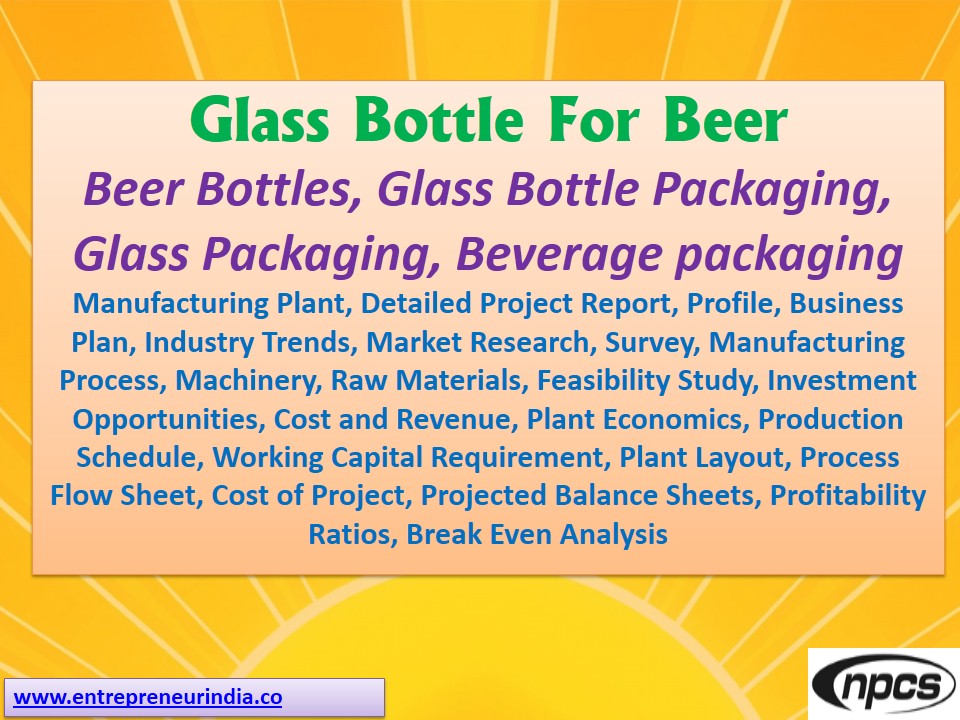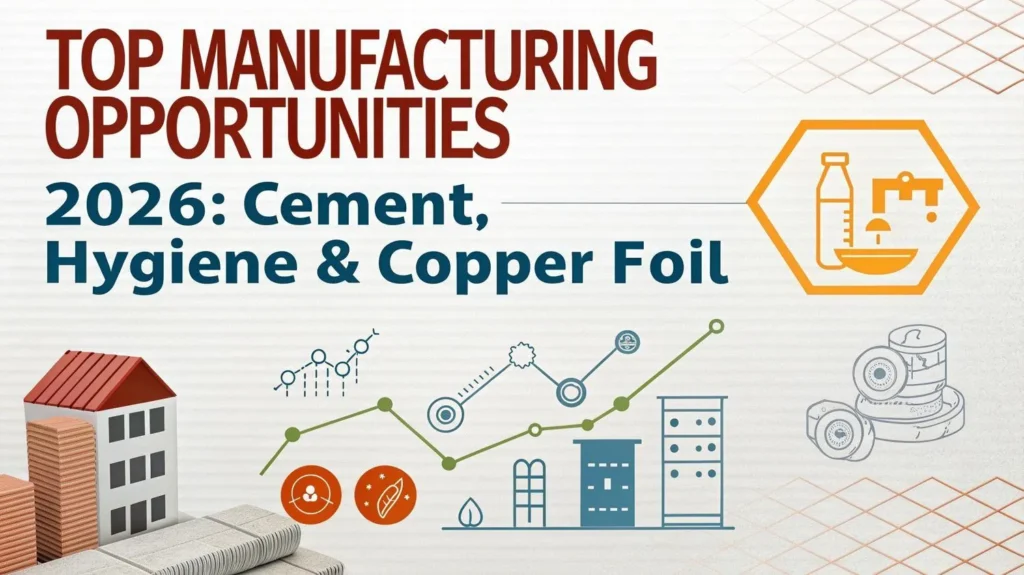
Glass bottles have been an integral part of the beer industry for over a century. Known for their inertness, reusability, and premium feel, they are preferred by many brewers and consumers alike. A beer bottles manufacturing plant can be an attractive venture due to the constant global demand for alcoholic beverages and the shift toward recyclable packaging. Besides breweries, glass bottles are in demand from soft drink, wine, and pharmaceutical industries as well. This business offers scalability, eco-friendly production, and export potential when set up with efficient technology and market analysis.
Overview of the Beer Bottle Manufacturing Industry
The glass bottle manufacturing sector has been driven by growth in beverage consumption and the move away from single-use plastic. Beer, in particular, has traditionally been packaged in amber or green glass bottles that protect the contents from UV light and preserve flavor. Countries with high beer consumption, such as the U.S., Germany, India, and China, offer consistent demand for durable and attractive packaging.
See Also : Herbal & Ayurvedic Cosmetics
The global market for glass packaging is expected to rise steadily due to consumer preference for sustainable packaging. As a result, establishing a beer bottles manufacturing plant provides entry into a resilient sector with long-term profitability.
Key Aspects of Beer Bottle Manufacturing
Raw Materials Required
The raw materials used in beer bottle production are abundantly available. These include:
-
Silica sand – The primary component for glass formation.
-
Soda ash – Lowers the melting point of silica.
-
Limestone – Improves durability and chemical resistance.
-
Cullet (recycled glass) – Enhances energy efficiency and melt rate.
-
Coloring agents – Iron, chromium, and sulfur for green or amber shades.
These ingredients are combined and melted in a furnace at high temperatures, usually above 1500°C, to form molten glass.
Manufacturing Process of Beer Bottles
The production of beer bottles follows a systematic sequence. The core stages include:
1. Batching and Mixing
All raw materials are carefully measured and mixed to ensure uniform composition. Recycled glass cullet is often added to reduce energy consumption.
2. Melting
The mixture is fed into a gas- or electric-fired furnace. Here, it is heated until it forms molten glass. This phase consumes the most energy and requires proper furnace design for optimal thermal efficiency.
3. Forming
The molten glass is passed through feeders and cut into “gobs” – small portions of molten glass. These gobs are shaped using the blow-and-blow or press-and-blow method in molds to form the bottle structure. Automatic machines are used for rapid and consistent shaping.
4. Annealing
After forming, the bottles are transferred to an annealing lehr. This stage involves slow cooling to relieve internal stresses in the glass and prevent breakage during later handling or usage.
5. Inspection and Quality Control
Each bottle undergoes strict inspection for defects such as cracks, bubbles, or irregularities. Automated inspection machines and human oversight are used to maintain quality.
6. Packaging and Storage
Once approved, the bottles are packed in pallets and stored or shipped to breweries and bottling companies.
Plant Requirements and Machinery
To establish a beer bottles manufacturing plant, the following machinery and equipment are required:
-
Raw material hoppers and mixers
-
Glass melting furnace
-
Feeder and gob cutter
-
Molding machines (IS machines)
-
Annealing lehr
-
Inspection units
-
Packaging equipment
A typical medium-scale plant may need an investment of ?5 to ?25 crores depending on capacity and automation level. Furthermore, infrastructure requirements include access to electricity, water, fuel (gas or electricity), and a clean industrial space.
Uses and Market Demand
While primarily used for beer packaging, these bottles also cater to:
-
Soft drink bottlers
-
Craft breweries and microbreweries
-
Wineries and distilleries
-
Pharmaceutical and food packaging
With a rise in homegrown beer brands and export potential, the demand for custom-labeled, uniquely shaped beer bottles has increased. Moreover, the durability and eco-friendliness of glass make it a preferred material over plastics.
Environmental and Economic Benefits
Glass bottle production incorporates cullet recycling, which reduces the need for virgin raw materials and energy usage. By including up to 60% recycled content, energy consumption can be cut by over 30%. In addition, the reuse and recyclability of glass bottles align with circular economy models.
On the economic front, once established, the manufacturing plant enjoys steady demand with minimal seasonal variation. The resale value of recycled glass, coupled with export potential, makes this business profitable in the long term.
Licensing and Compliance
Before starting a beer bottles manufacturing plant, entrepreneurs must:
-
Obtain factory and pollution control licenses.
-
Register with the local municipal and state industrial departments.
-
Comply with BIS standards for glass containers.
-
Follow environmental and worker safety regulations, including handling of high-temperature machinery.
ISO certification and adherence to FDA or FSSAI packaging norms may also be required when supplying to food and pharma companies.
Financial Considerations
-
Initial Investment: ?5 to ?25 crores (depending on automation level)
-
Working Capital: ?1 to ?2 crores for materials, labor, and utilities
-
Profit Margin: Generally ranges between 15% to 25%
-
Break-even Point: Achievable within 2 to 3 years under normal market conditions
Profitability is boosted by selling to multiple industries and offering custom design services or branding on bottles.
Opportunities for Growth
Several factors encourage expansion in this sector:
-
Rise in craft and microbreweries across urban India and global markets
-
Growing preference for eco-friendly and recyclable packaging
-
Government incentives for waste recycling and clean production
-
Export demand from Europe, Middle East, and South Asia
Automation and smart monitoring systems have enabled significant scale and quality control in operations, enhancing productivity and lowering unit costs.
Challenges and Risk Factors
Despite its strengths, some challenges include:
-
High energy consumption and fuel dependency
-
Capital-intensive setup
-
Competition from plastic and aluminum packaging
-
Breakage during transport if improperly handled
These risks can be mitigated through automation, recycled material usage, and efficient logistics partnerships.
Market Trends and Future Outlook
Currently, glass packaging accounts for a significant share of the alcoholic beverage market. With bans on single-use plastic and rising environmental consciousness, glass bottles are poised for resurgence.
Innovations such as lightweight bottles, UV-protective coatings, and digitally printed designs are gaining popularity. Moreover, biodegradable labeling and tamper-evident closures are adding value to the packaging.
Government Support and Schemes
Various central and state-level schemes promote industrial manufacturing in India. These include:
-
PMEGP (Prime Minister’s Employment Generation Programme)
-
MUDRA Loans for MSMEs
-
Technology Upgradation Fund Schemes
-
Subsidies for recycling initiatives and green manufacturing
Entrepreneurs can benefit from these schemes by preparing a detailed project report and applying through DIC or SIDBI.
Market Entry Strategy
To ensure a successful plant setup:
-
Conduct a detailed market feasibility report
-
Choose a location close to glass raw material suppliers and beverage industries
-
Use energy-efficient furnace designs
-
Target both domestic and export markets
-
Invest in digital marketing and participate in packaging expos
Export Potential
India’s strategic location and improving trade relations with South Asian, African, and Gulf countries offer significant export opportunities. Custom-made beer bottles can be export in bulk to countries with limited local manufacturing capacities.
Sustainable Initiatives
More plants are now adopting:
-
Electric furnaces to reduce emissions
-
Rainwater harvesting and effluent treatment
-
Solar power for auxiliary operations
-
Zero-waste packaging for logistics
These steps also help attract green financing and international funding.
See Also : Coconut Products Manufacturing
Conclusion
A beer bottles manufacturing plant presents a promising business model backed by consistent demand, sustainability, and broad applications. Although high initial investment is involve, steady revenues and multiple customer segments ensure long-term success. With technological upgrades, environmental compliance, and market-focused strategies, entrepreneurs can establish a profitable venture in glass bottle production.





